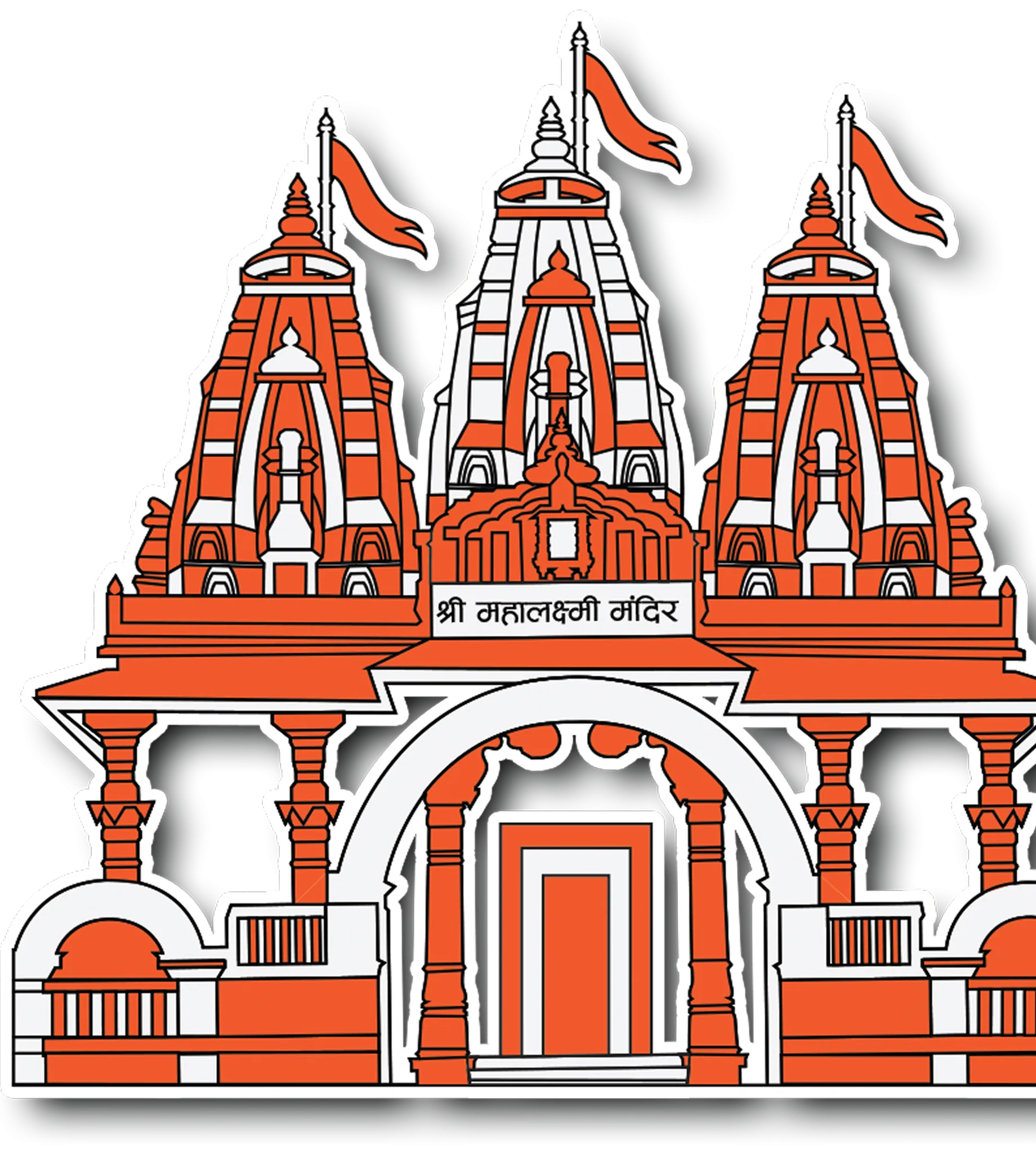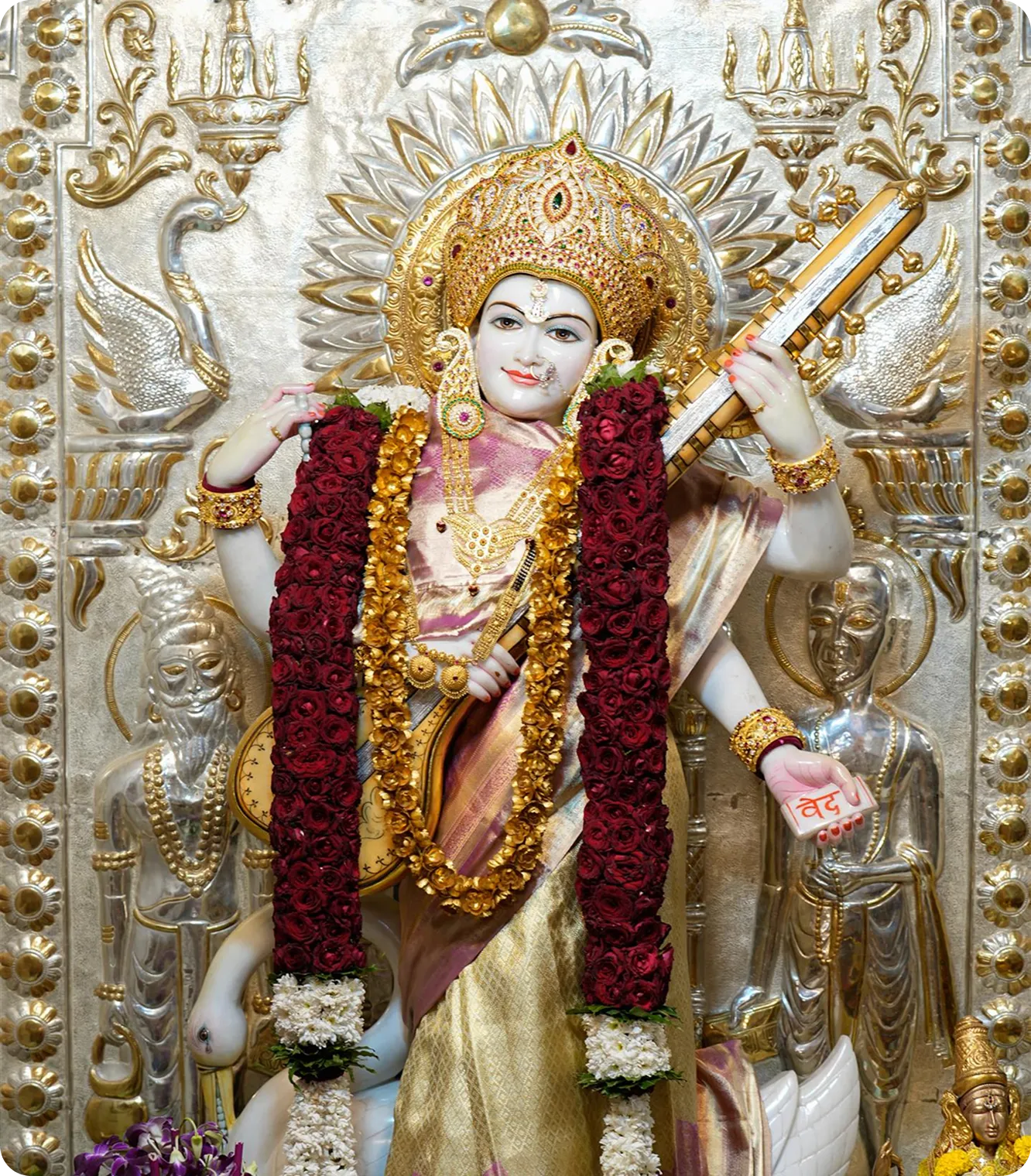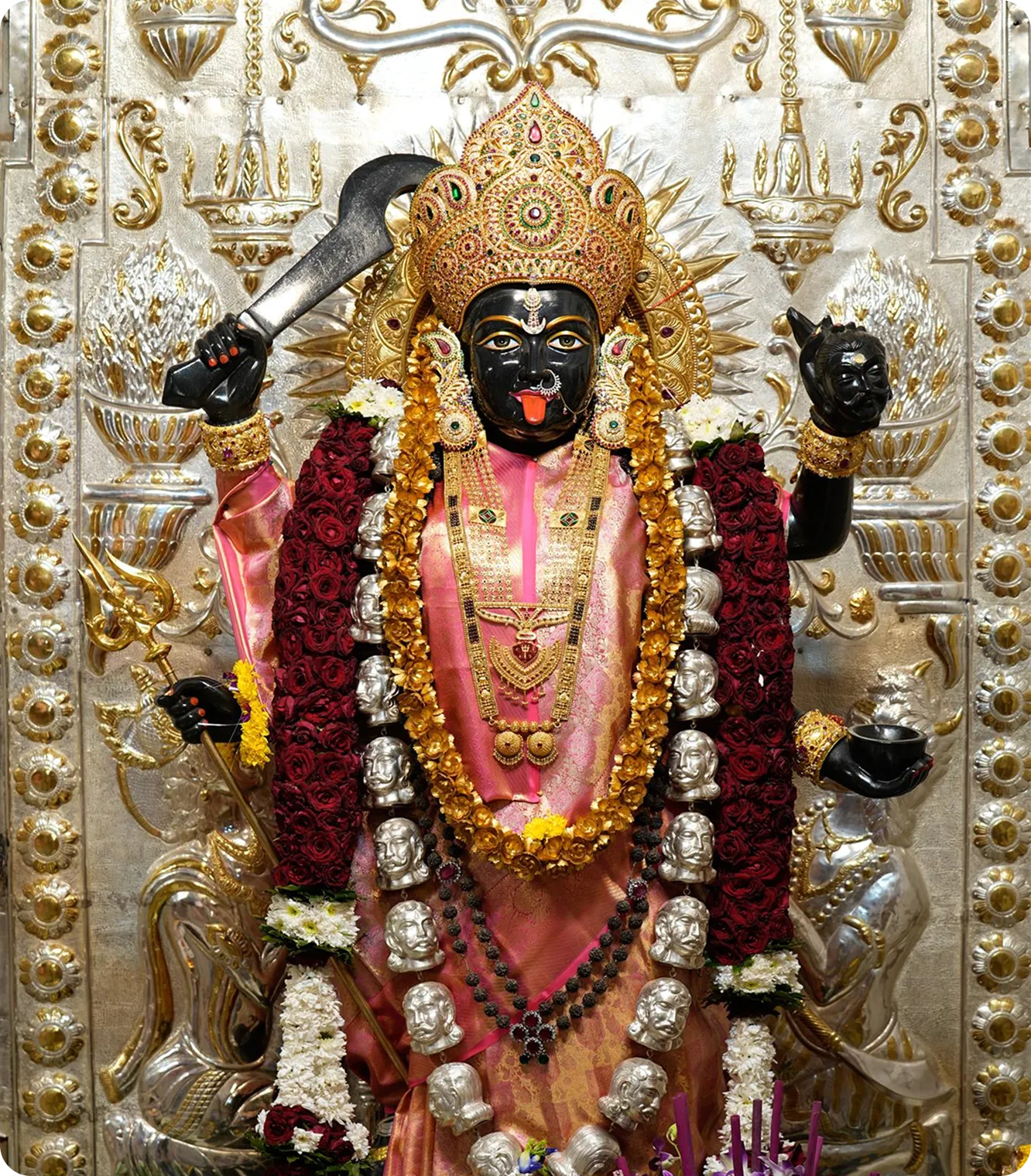
Temple History
Lives consecrated to Social Service: The special kind of unity between purpose and duty, belief and resolution is the foundation of the temple.Born in a village, Moribeda in Pali district of Rajasthan, Shri Bansilalji was brought up in an educated and well to do family. His wife Smt. Sushila Devi was born in Boondi. Shri Bansilalji was born to Shri Ramnath who was a small shopkeeper. They were a family made up of four brothers and one sister. The family was not financially well-off. However, determination and strong will to achieve success along with hard work is what made him well off in the city of Pune. As far as Shri Bansilalji was concerned he thought he could make his way across all odds. His own words were, “One day I will surely enjoy the sweetness of success, or I will take the sweet sleep of death”. This was shown in the life of Shri Bansilalji. With his increasing prosperity, he grew to a higher sense of responsibility to the society and his thoughts drifted to service.
The Bansilal Ramnath Agarwal Charitable Trust is deeply committed to social and cultural welfare. Sushila Devi supported Shri Bansilal in all of his endeavours. At the tender age of 14 she had come with her husband to Pune. She was once a devout student of the sacred volumes and gave steadfast support to her husband through her unwavering faith and endurance. Despite the constraints of domestic responsibilities, she actively participated as a significant partner in the social and religious activities of Shri Bansilalji. She also possessed remarkable decision-making skills.At that time it was a prestigious thing to have a bungalow opposite Sarasbaug, Pune. However, she wanted to construct a temple instead of constructing a grand house there. It is a temple which has got close to the devotees not only in Pune and Maharashtra but all over India.

About Mahalaxmi Mandir, SarasBaug, Pune
Feel the divinity at Mahalaxmi Mandir, Sarasbaug, Pune, a one of a kind temple, where the devotee gets the darshan of all the three manifestations of Adi Shakti, Shri Mahasaraswati, Shri Mahalaxmi and Shri Mahakali. The temple consists of an impressive 55 feet tall shikhar (Tower), and built in Dravidian style architecture, they serve as a testament to the fact that the temple is grand! The walls, pillars and entrance are highly decorated with carvings that are very fascinating to visitors.
The route by which the people encircle the temple (also termed as a circumambulation path) is a spiritual journey by itself where images of 12 Sants, such as Sant Dnyaneshwar, Sant Tukaram, and Sant Mirabai are instilled, where, the devotees are able to honor these spiritual role models.
There are 6 ft high deities of the three goddesses in the temple delicately carved by artisans of Kala Kendra, Jaipur, out of the spotless marble. Hemraj Sompura, a famous sculptor directed the project, which took a period of 12 years to be completed. The temple was dedicated on February 15, 1984 after which it has developed into a favorite destination of believers.
Live Darshan of Mahalaxmi Mandir enables people who cannot afford a physical visit to connect with the divine from anywhere in the world. The temple equally presents the chance to devotees to watch Mahalaxmi Mandir Abhishek Ceremony to seek blessings. When you donate through Mahalaxmi Mandir Donation Services, it aids in the maintenance and service activities of the temple. These services will also be available to upcoming generations.
About The Goddesses
Mahalaxmi Mandir Pune is the only temple where Mata Mahalaxmi, Mata Saraswati, and Mata Mahakali are worshipped together.
This unique trinity represents wealth, wisdom, and strength. Devotees come here to seek blessings from all three divine forms in one sacred place. Experience complete spiritual harmony at this one-of-a-kind temple.

Shri Mahasaraswati Mata
Saraswati (Sanskrit: Sarasvati) is the goddess of knowledge, music, arts, wisdom, and learning. She is worshipped across all parts of India. Saraswati is one of the trio of goddesses along with Laxmi and Parvati. These three represent the powers of Brahma, Vishnu, and Shiva to create, sustain, and recreate the universe.The Rigveda contains the earliest known reference to the Goddess Saraswati. She has been an important deity from Vedic times to the present day in Hindu tradition. Devotees worship her during the festival of Vasant Panchami, which is also a special day when young children are taught to write their first alphabets.The Veena that Maa Saraswati holds represents not only harmony but also intelligence and intellect.

Shri Mahalaxmi Mata
‘Lakshmi’ is a Sanskrit word that comes from the root ‘laks’, which means to perceive or observe. It is related to the word laksya, meaning aim or objective. Goddess Laxmi has many names. Along with celebrating the autumn season, she is worshipped during Diwali festival. Laxmi is strongly connected to the lotus flower, and many of her names reflect this—such as Padmā, Kamalā, and Padmahastā. Other names include Manushri, Chakrika, Kamalika, Aishwarya, Lalima, Kalyani, Nandika, Rujula, Vaishnavi, Samruddhi, Narayani, Bhargavi, Sridevi, Chanchala, Jalaja, Madhavi, Sujata, and Shreya. During Navratri, devotees offer food and sweets to her and chant her name 108 times as a form of devotion.

Shri Mahakali Mata
Mahakali, also known as Great Kali, is the Hindu goddess of time and death. She is considered the wife of Mahakala, the god of consciousness, who represents the foundation of reality and existence. In Sanskrit, "Mahakali" is the feminine form of "Mahakala," an epithet of Lord Shiva. Mahakali represents Adi Parashakti, the supreme energy that exists beyond time and space. Kali, as a form of Adi Parashakti, symbolizes divine anger and destruction of evil. She is also worshipped as the Divine Mother by many Hindus. In her four-armed form, Mahakali is shown holding a sword, a trishul (trident), a severed head, and a bowl or skull-cup (kapala) to collect the blood. Her eyes are red with intensity, her hair is messy, and her tongue hangs out of her mouth. She sometimes has small fangs, and she wears a garland made of demon heads she has defeated. She is often shown standing on the body of Shiva. This image is commonly understood to show that Mahakali (Shakti) is the active power of creation in the universe, while Shiva (pure consciousness) is passive without her energy.



